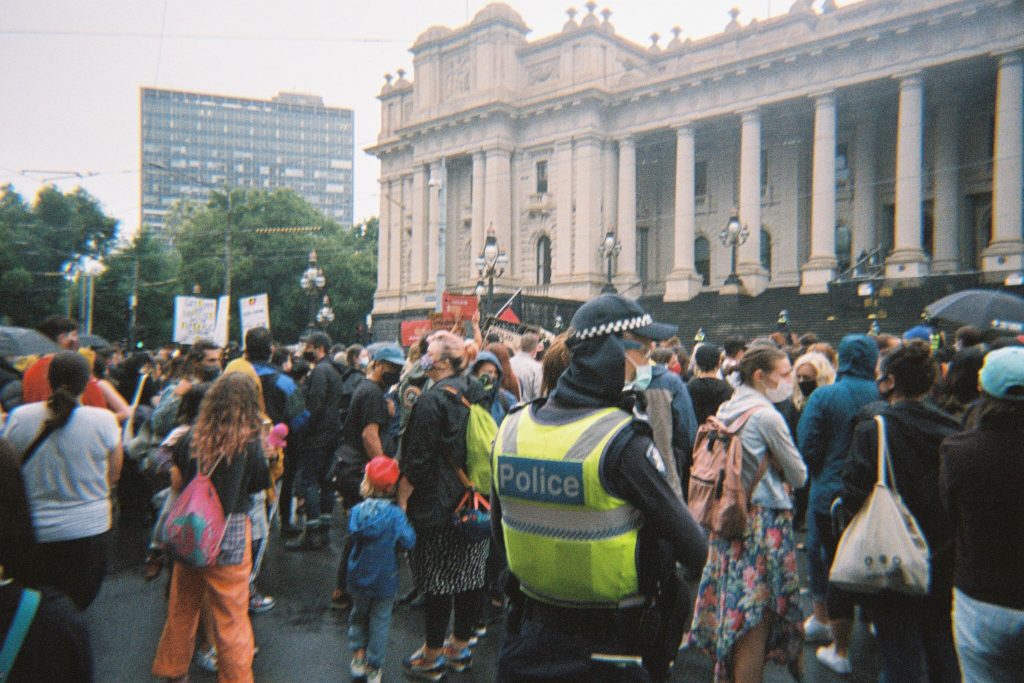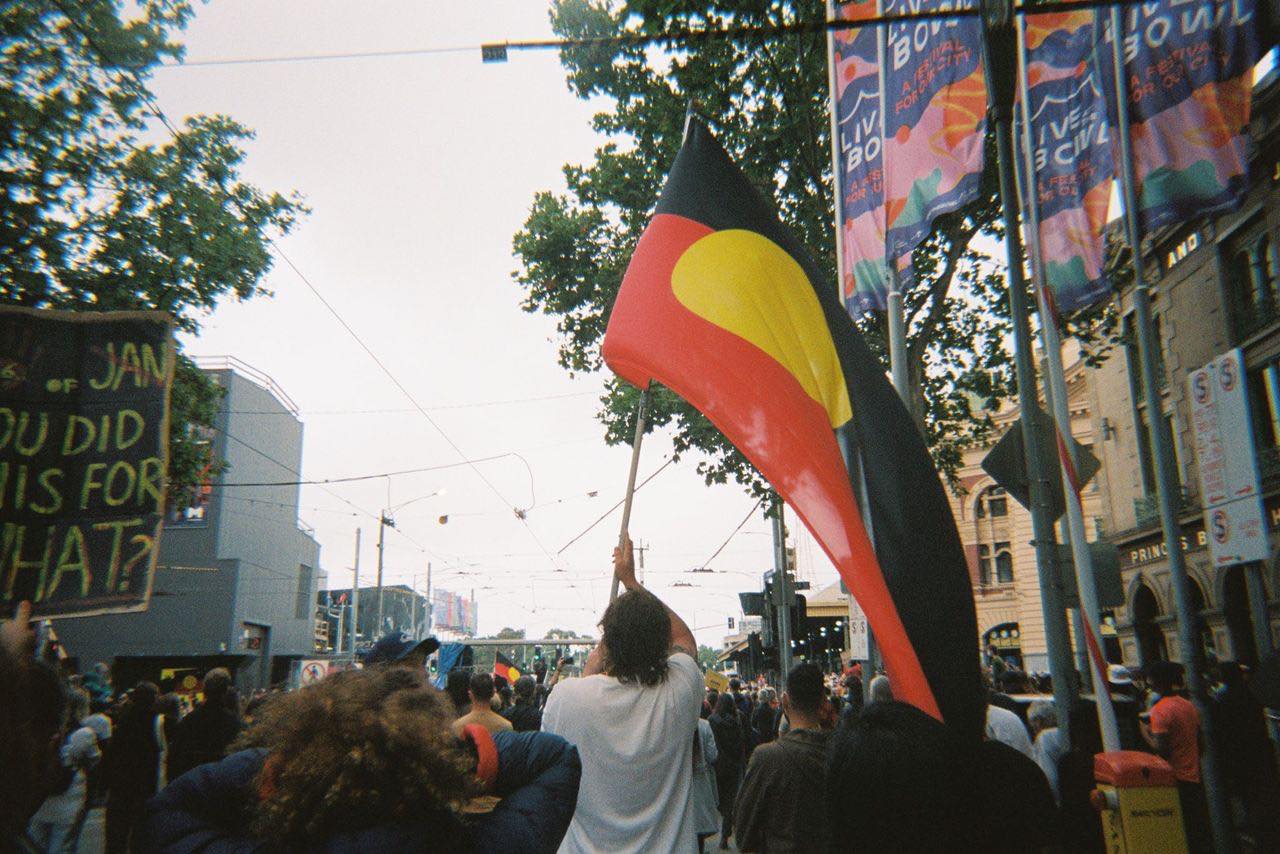Written by Jasper Cohen-Hunter
First Nation’s people are amongst the most incarcerated people in the world, whilst representing 3.3 percent of this country’s population. In 2020, Indigenous men make up for 29 percent of prisoners and Indigenous women constitute for 34 percent of prisoners. Between the ages of 10-13, 65 percent of incarcerated children are Aboriginal or Torres Strait Islander peoples. 55 percent of the youth prison population are Indigenous. The ‘Royal Commission into Aboriginal Deaths in Custody’, was announced by former Prime Minister Bob Hawke in 1987, since the recommendations were made in 1991, 474 Indigenous deaths have disgustingly occurred with no criminal convictions for the accused.
What isn’t written between these statistics, is that institutional racism requires the 475th death to keep the machine functioning.
Last night, Dean Gibson’s NITV documentary ‘Incarceration Nation’ aired on SBS on Demand and NITV at 8:30pm to a national audience. The documentary features never before seen CCTV footage of human rights abuses of First Nation’s children, aunties, uncles and grandparents by the Australian police and the ‘Just Us’ system. The documentary aired through panels on other main channel stations; discussions over the controversial nature of the documentary but never truly touching the surface of the real abuses here. Dean Gibson addresses the comments of our Prime Minister refusing to believe slavery occurred here and speaks to the family and the individuals with lives destroyed by the settler colonialism and genocide.
The truth is, young people just aren’t getting behind the statistics. When we see a mass crowd of young people protesting justice for First Nation’s people, it occurs after another loss. 26 January 2021, we saw a large crowd draw of thousands of young people coming to support mob.
It was the early morning; I had been drenched in rain from the beautiful dawn service brought together by Djirri Djirri and Aunty Joy Wandin-Murphy, I carried a clear bag in case I was unlawfully searched and I walked to Bourke Street. Upon the speeches starting, I felt myself go into a sense of shock and began feeling sick to the point of needing to rest on the ground. What wasn’t expected was to hear the names of my ancestors in the speeches, the voices of my mob up there on stage to thousands of people. But once the people started walking, the disaster happened. Next to me as we turned through Swanston, demanding justice for my people, the group next to me left the protest to buy Sushi and never came back. The youth next to me would sit down when the protest would come to a halt, take a few photos then leave.

While the walk came through to Flinders Street, I kept my silence. I shared my story, my people’s story with anyone in the surroundings who would listen. But as we walked closer to the final places of the protest, the group I had been surrounded with at the beginning were all gone… and the ones I came with were left. Maybe it’s too controversial for me to say that the people attending a protest don’t care, because after all, they are here, right? But when it comes to denouncing racism on a day-to-day basis, our youth aren’t doing a thing. There is a reason why the people I surround myself with apologise to me before making a racist comment, it’s because they know what they are saying is disgusting, and they know I will not stand for it. When I go out with friends, I keep a note on my phone and tab how many derogatory comments are made as a coping mechanism for not being brave enough to speak up. From my own quantitative research, the statistics are rotting my brain.
Institutional Racism breeds virality. There is a reason why us mob only have our social media posts go viral when we talk about topics that leave us traumatised and re-traumatise our brothers and sisters watching. The machine profits from our genocide and the likes and comments are the new currency. Recently, a resurgence of white bad-faith actors, even amongst people close to me have been posting traumatising, vile acts of racism to their feed for my mob to sit in an empty room with a hole in our chest while the engagement accumulates. A video of someone who looks just like us being assaulted, will leave us in bed for a day, but will just be apart of the profit cycle for mainstream ‘Australia’. When these videos are posted, they are in the past. What’s happened in the video has torn a family apart, has blown a hole in the heart of First Nation’s people, has ripped limb to limb of the small progress we’ve made. Assimilate or be killed, absorb or fall between the cracks.
How can we sit calm anymore? Who will be next, and why does young white Australia call for our deaths to make the machine turn?
In 2018, American clothing brand KNYEW created a T-shirt with the image of tortured Dylan Voller who was mechanically restrained after posing a threat to self-harm and suicide for 2 hours. This t-shirt profited from state-sanctioned violence against a young man who needed medical attention.

This form of profiteering from violence is common amongst young people and it needs to be addressed and the biggest fear of bringing Americanised race politics to this country is coming to realisation. The self-proclaimed Black Lives Matter experts that come from high-income, predominantly white private schools, who have only read about racism in the history books. The new profiteering is the momentum required to get these people on the streets, rather than stopping racism before another death, another suicide happens before our eyes. But the real anti-racism starts when these youth address that the bushman, pastoralists and farmers they came from were the murderers and rapists that lead us here.
My only review comment for ‘Incarceration Nation’ is that repetition is needed when the people simply won’t listen from the start.
Incarceration Nation is now streaming on SBS On Demand.


